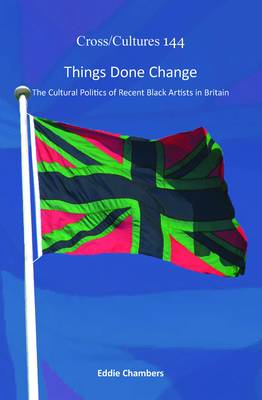
- Afhalen na 1 uur in een winkel met voorraad
- Gratis thuislevering in België vanaf € 30
- Ruim aanbod met 7 miljoen producten
- Afhalen na 1 uur in een winkel met voorraad
- Gratis thuislevering in België vanaf € 30
- Ruim aanbod met 7 miljoen producten
Zoeken
€ 172,95
+ 172 punten
Omschrijving
1980s Britain witnessed the brassy, multifaceted emergence of a new generation of young, Black-British artists. Practitioners such as Sonia Boyce and Keith Piper were exhibited in galleries up and down the country and reviewed approvingly. But as the 1980s generation gradually but noticeably fell out of favour, the 1990s produced an intriguing new type of Black-British artist. Ambitious, media-savvy, successful artists such as Steve McQueen, Chris Ofili, and Yinka Shonibare made extensive use of the Black image (or, at least, images of Black peo¬ple, and visuals evocative of Africa), but did so in ways that set them apart from earlier Black artists. Not only did these artists occupy the curatorial and gallery spaces nominally reserved for a slightly older generation but, with aplomb, audacity, and purpose, they also claimed previously unimaginable new spaces. Their successes dwarfed those of any previous Black artists in Britain. Back-to-back Turner Prize victories, critically acclaimed Fourth Plinth commissions, and no end of adulatory media attention set them apart.
What happened to Black-British artists during the 1990s is the chronicle around which Things Done Change is built. The extraordinary changes that the profile of Black-British artists went through are dis¬cussed in a lively, authoritative, and detailed narrative. In the evolving history of Black-British artists, many factors have played their part. The art world's turning away from work judged to be overly 'political' and 'issue-based'; the ascendancy of Blair's New Labour government, determined to locate a bright and friendly type of 'diversity' at the heart of its identity; the emergence of the precocious and hegemonic yBa grouping; governmental shenanigans; the tragic murder of Black Londoner Stephen Lawrence - all these factors and many others underpin the telling of this fascinating story.
Things Done Change represents a timely and important contribution to the building of more credible, inclusive, and nuanced art histories. The book avoids treating and discussing Black artists as practitioners wholly separate and distinct from their counterparts. Nor does the book seek to present a rosy and varnished account of Black-British artists. With its multiple references to Black music, in its title, several of its chapter headings, and citations evoked by artists themselves, Things Done Change makes a singular and compelling narrative that reflects, as well as draws on, wider cultural mani¬festations and events in the socio-political arena.
What happened to Black-British artists during the 1990s is the chronicle around which Things Done Change is built. The extraordinary changes that the profile of Black-British artists went through are dis¬cussed in a lively, authoritative, and detailed narrative. In the evolving history of Black-British artists, many factors have played their part. The art world's turning away from work judged to be overly 'political' and 'issue-based'; the ascendancy of Blair's New Labour government, determined to locate a bright and friendly type of 'diversity' at the heart of its identity; the emergence of the precocious and hegemonic yBa grouping; governmental shenanigans; the tragic murder of Black Londoner Stephen Lawrence - all these factors and many others underpin the telling of this fascinating story.
Things Done Change represents a timely and important contribution to the building of more credible, inclusive, and nuanced art histories. The book avoids treating and discussing Black artists as practitioners wholly separate and distinct from their counterparts. Nor does the book seek to present a rosy and varnished account of Black-British artists. With its multiple references to Black music, in its title, several of its chapter headings, and citations evoked by artists themselves, Things Done Change makes a singular and compelling narrative that reflects, as well as draws on, wider cultural mani¬festations and events in the socio-political arena.
Specificaties
Betrokkenen
- Auteur(s):
- Uitgeverij:
Inhoud
- Aantal bladzijden:
- 350
- Taal:
- Engels
- Reeks:
- Reeksnummer:
- nr. 144
Eigenschappen
- Productcode (EAN):
- 9789042034433
- Verschijningsdatum:
- 1/01/2012
- Uitvoering:
- Hardcover
- Formaat:
- Genaaid
- Afmetingen:
- 127 mm x 229 mm
- Gewicht:
- 530 g

Alleen bij Standaard Boekhandel
+ 172 punten op je klantenkaart van Standaard Boekhandel
Beoordelingen
We publiceren alleen reviews die voldoen aan de voorwaarden voor reviews. Bekijk onze voorwaarden voor reviews.








